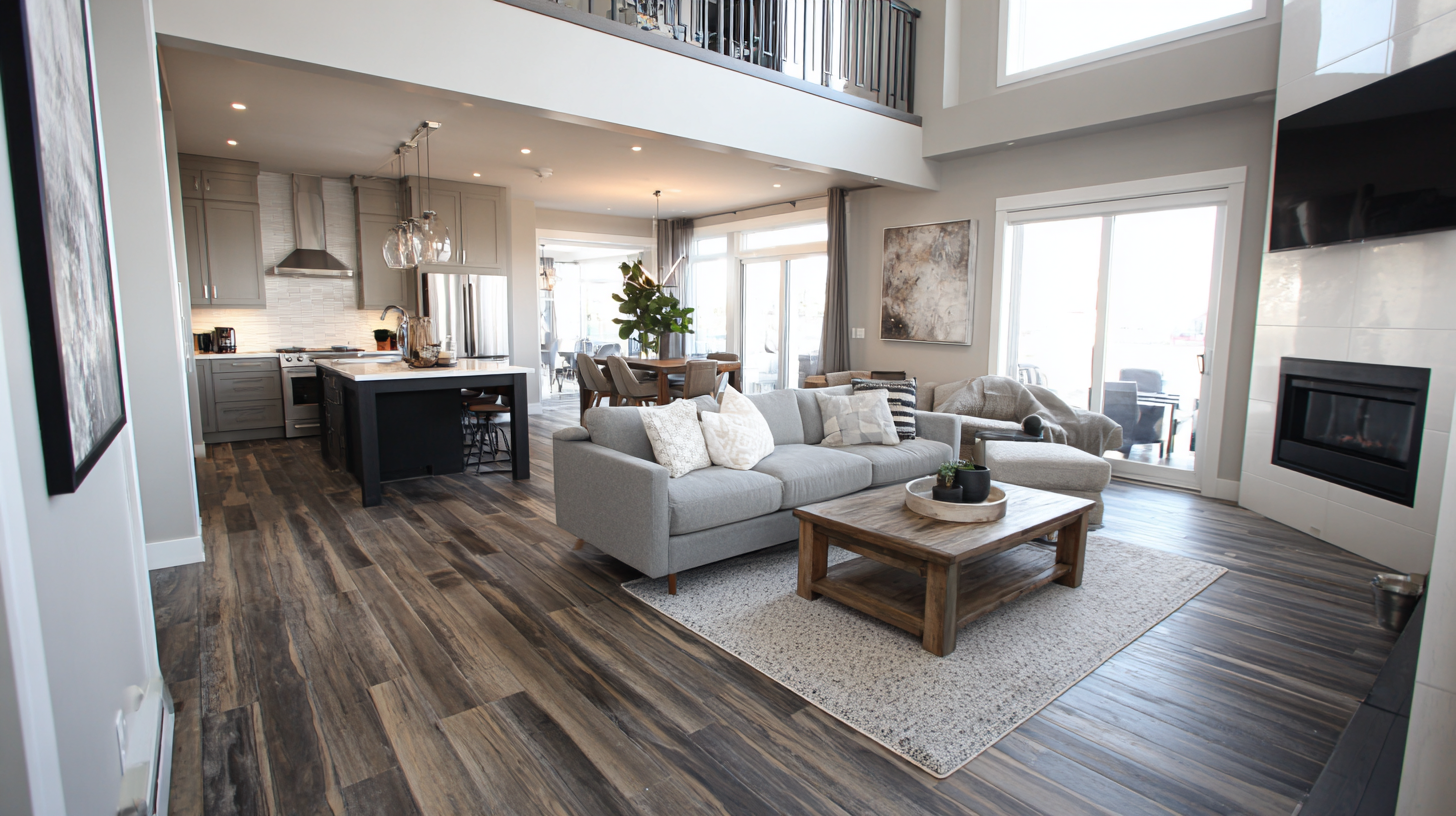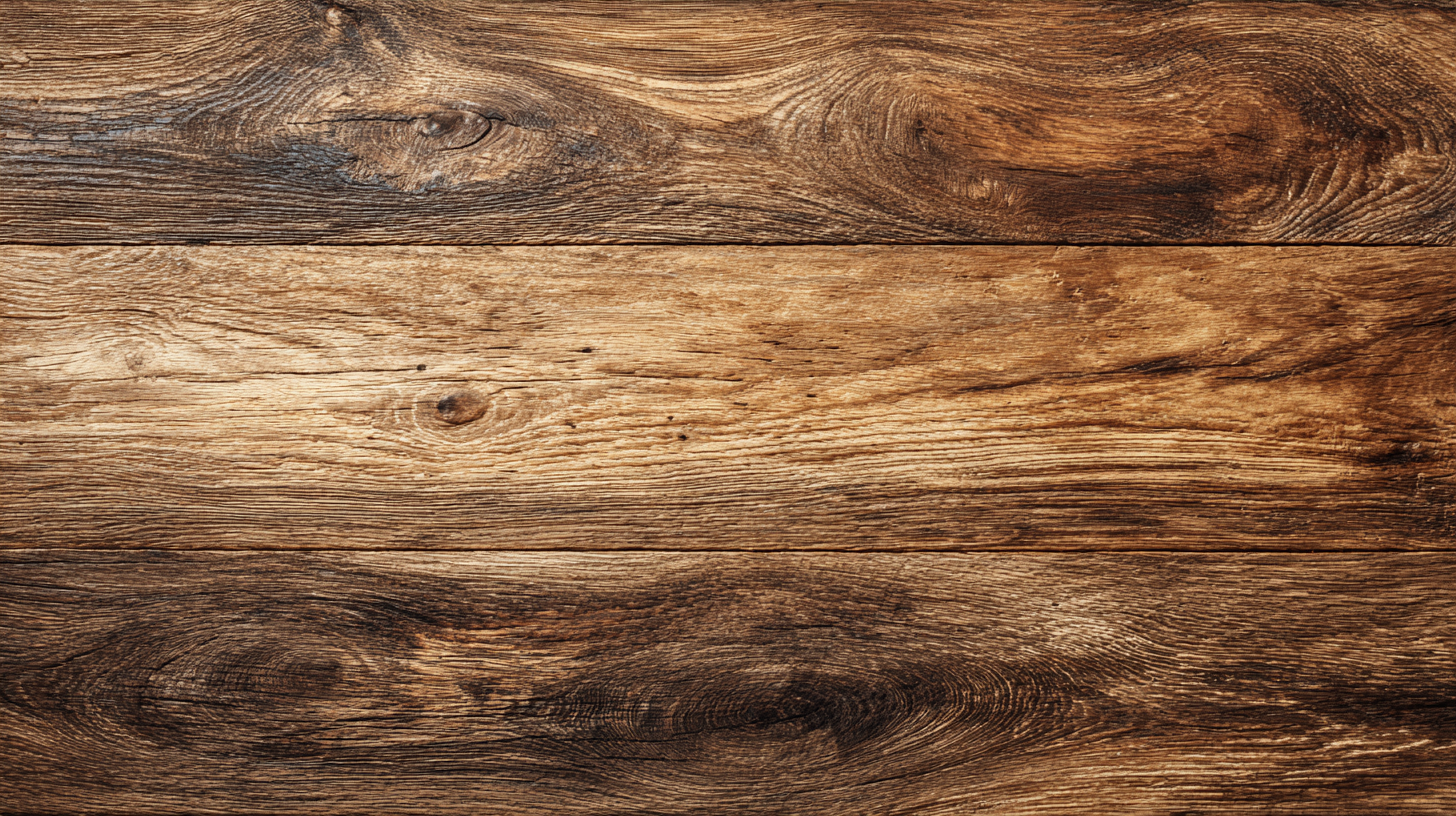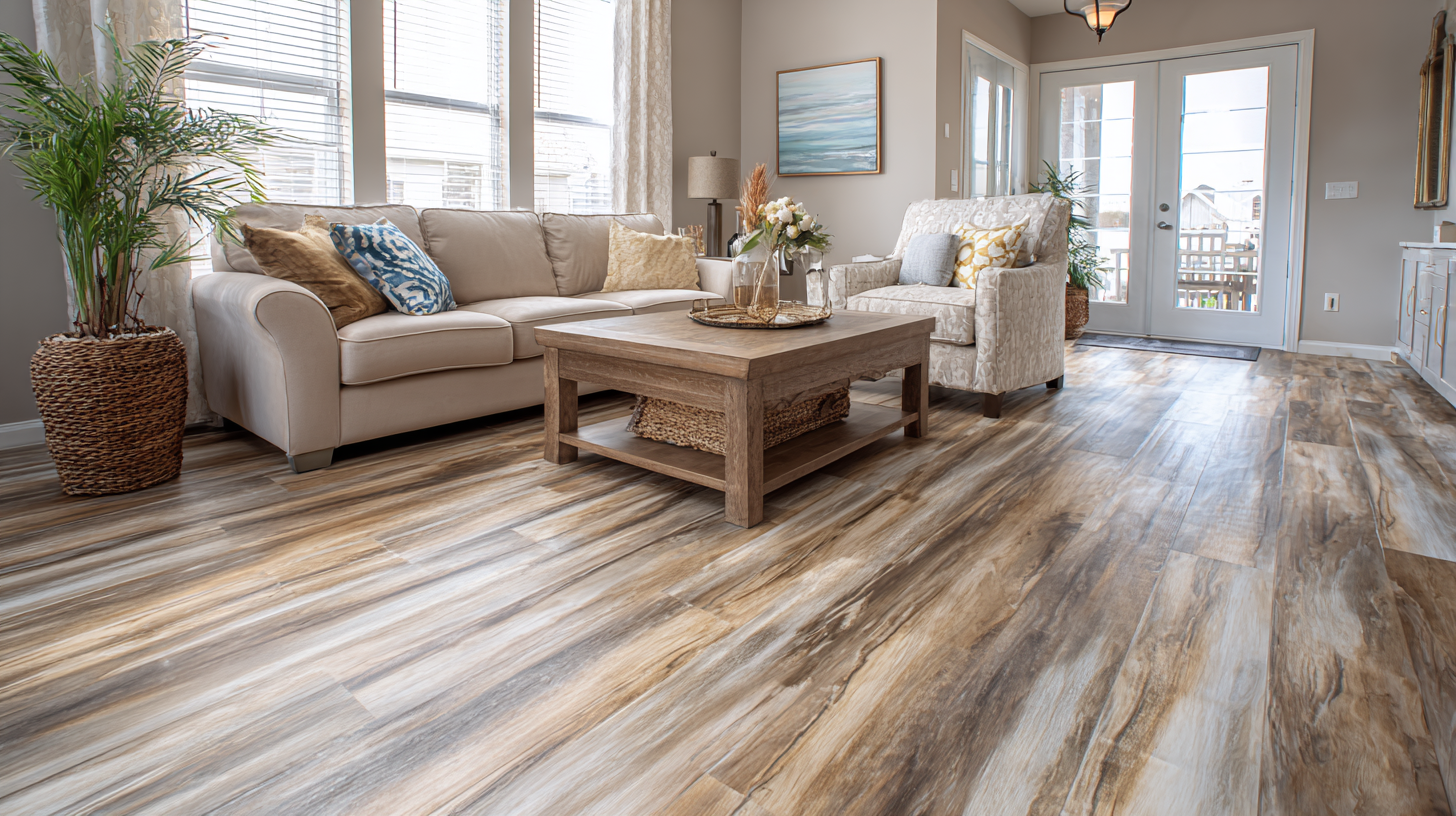As modern homes continue to evolve, so too do the materials that adorn their interiors. One product that has experienced notable growth in popularity is SPC plank flooring, a revolutionary choice for homeowners seeking durability, style, and sustainability. According to a recent market report by Grand View Research, the global SPC flooring market is projected to reach USD 6.09 billion by 2025, growing at an impressive CAGR of 10.1%. This rise can be attributed to SPC's unique composition, which provides superior resilience against moisture, scratches, and wear, making it an ideal flooring solution for high-traffic areas. Moreover, as sustainability becomes increasingly vital in consumer choices, SPC plank flooring stands out due to its eco-friendly production processes and recyclable materials. In this guide, we will delve into the benefits of SPC plank flooring, highlighting why it deserves a place in contemporary home design.

SPC (Stone Plastic Composite) plank flooring has gained significant traction in contemporary home design, captivating homeowners and designers alike. Its rise in popularity is attributed to its remarkable durability and aesthetic appeal. Unlike traditional hardwood or laminate floors, SPC plank flooring combines limestone and PVC, resulting in a product that is resistant to water, scratches, and dents. This makes it an ideal choice for high-traffic areas and homes with pets or children.
Furthermore, the versatility of SPC flooring has redefined interior design possibilities. Available in an extensive range of colors, patterns, and textures, SPC planks can mimic the look of real wood or stone, seamlessly integrating into various design styles—from modern minimalism to rustic charm. This adaptability not only enhances the visual appeal of spaces but also caters to different consumer preferences. As sustainability continues to shape consumer choices, SPC plank flooring stands out as an eco-friendly option, often made from recycled materials, further increasing its desirability in today’s market.
SPC (Stone Plastic Composite) plank flooring is rapidly gaining traction in modern homes due to its remarkable advantages, particularly in durability, water resistance, and ease of maintenance. As the flooring market continues to evolve, SPC flooring stands out with its robust construction, making it resistant to scratches and dents, which is crucial for high-traffic areas in residential settings. According to industry reports, the Luxury Vinyl Plank (LVP) market is projected to reach USD 12 billion by 2035, growing at a CAGR of 5.6%, highlighting the increasing preference for durable and stylish flooring options among homeowners.
In addition to its strength, SPC flooring is highly water-resistant, making it an ideal choice for areas prone to spills and moisture, such as kitchens and bathrooms. This characteristic not only enhances the lifespan of the flooring but also simplifies maintenance, as cleaning requires minimal effort. A recent report estimated that the vinyl flooring market valuation is set to hit USD 44.86 billion by 2033, driven by innovations in waterproof designs and sustainable practices. With such compelling benefits, SPC flooring is not just a trend but a fundamental shift towards more resilient and environmentally friendly flooring solutions for contemporary homes.
SPC (Stone Plastic Composite) flooring has gained significant traction in modern homes, not only for its aesthetic appeal but also for its sustainability credentials. One of the major benefits of SPC flooring is its composition. It typically incorporates limestone, which is abundant and requires minimal processing compared to traditional hardwoods. According to a report by the National Association of Home Builders, using such eco-friendly materials can lower a home’s carbon footprint by up to 30% compared to conventional flooring options.
The manufacturing processes of SPC flooring further enhance its sustainability. Many manufacturers employ techniques that minimize waste and reduce energy consumption. For instance, a recent survey by the Forest Stewardship Council indicated that some SPC products are now manufactured in facilities powered by renewable energy sources, thereby decreasing greenhouse gas emissions. By selecting SPC flooring, homeowners contribute to a healthier planet without compromising on style or durability.
Tips: When choosing SPC flooring, look for products certified by recognized environmental standards to ensure they meet sustainability criteria. Additionally, consider suppliers that embrace transparency in their manufacturing processes, as this can be a good indicator of their commitment to eco-friendly practices.
SPC (Stone Plastic Composite) flooring is gaining traction in modern homes due to its remarkable cost-effectiveness compared to traditional hardwood and laminate options. A report from the National Wood Flooring Association indicates that while the average installed cost of hardwood flooring ranges between $8 to $14 per square foot, SPC flooring can be installed for as little as $3 to $5 per square foot, significantly reducing overall renovation expenses. Additionally, SPC's durability minimizes long-term maintenance costs, as it is less susceptible to scratches and moisture damage.

When considering a flooring choice, think about the long-term savings associated with SPC flooring. Its resistance to water and wear can lead to fewer repairs and replacements over time. According to a study by the Resilient Floor Covering Institute, SPC flooring can last up to 20 years with proper care, compared to an average of 10-15 years for laminate options. This longevity combined with its affordability makes SPC an attractive option for budget-conscious homeowners.
Tips: When shopping for SPC flooring, always check for warranties that can extend coverage for up to 30 years. Additionally, consider eco-friendly brands that use recycled materials, ensuring your choice contributes to sustainability without compromising on style or function.
SPC (Stone Polymer Composite) plank flooring has gained significant popularity in modern homes, primarily due to its effortless installation process. Unlike traditional flooring options, SPC planks can be installed quickly and efficiently, making them an ideal choice for both homeowners and professional installers. The click-lock mechanism allows for floating installations, eliminating the need for glue or nails, which not only reduces installation time but also minimizes mess.

In addition to saving time, the streamlined installation of SPC flooring means that homeowners can enjoy their new floors sooner without the inconvenience of lengthy renovation projects. Lightweight and easy to handle, SPC planks can be installed over existing floors, further accelerating the process. This adaptability ensures that even those with minimal DIY experience can achieve a beautiful finish, enhancing the overall appeal of their living spaces. The time-saving benefits of SPC flooring make it a practical choice for those looking to transform their homes without extensive disruption.






